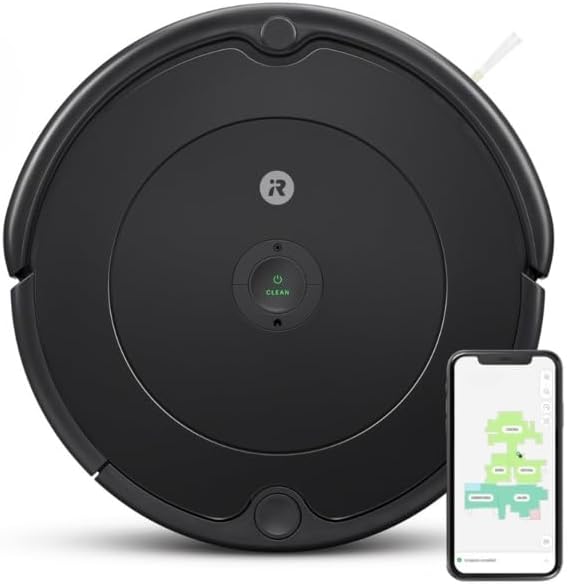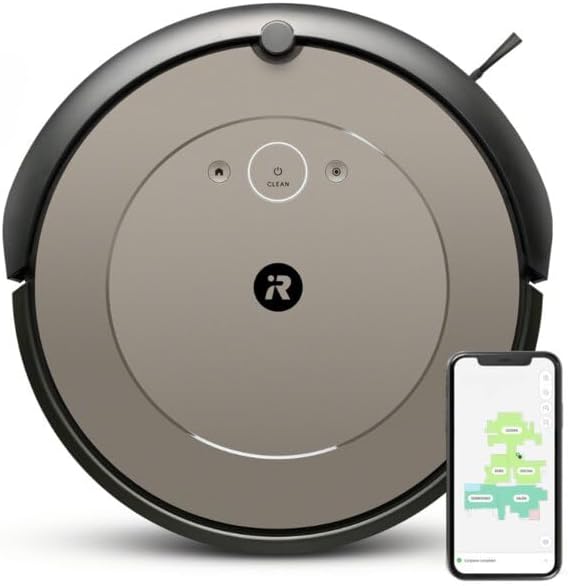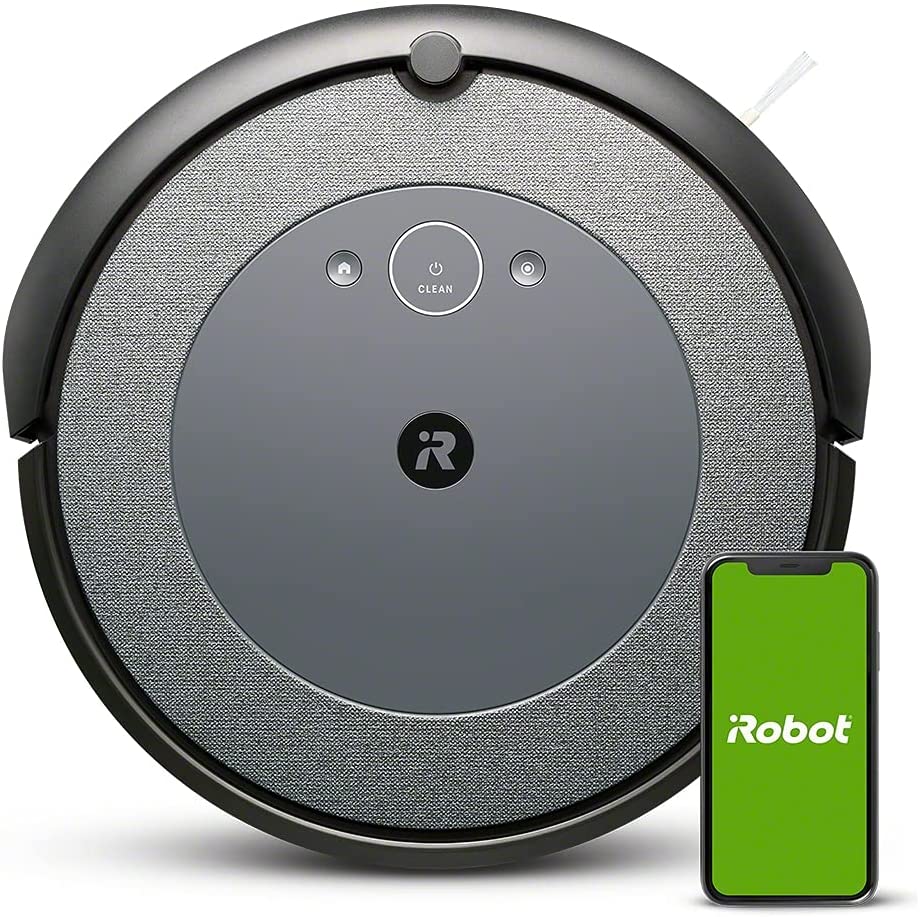|
Top sales! Roomba 692
Power: Standard |
Good opinions! Roomba i1
Power: x10 (600 Series) |
Our recommendation! Roomba i3
Power: x10 (600 Series) |
One of the brands that has been in the robot vacuum cleaner market for the longest time is Roomba. In fact, we dare to say that it was the promoter of this type of devices in our country. Even today it is common to hear people referring to robot vacuum cleaners directly as “Roomba”, which shows the great impact it has had among people. Today we focus on three of its simplest and most basic models, to compare their differences and similarities. These models are the Roomba 692, the Roomba i1 and the Roomba i3.
They are one of the first that the brand launched, and, therefore, they are the lowest range within Roomba. Now, its price is not exactly low, especially if we compare it with other simple robot vacuum cleaners from the competition. One of the aspects in which we find differences between the Roomba 692 and the two i-series Roombas is power. Although iRobot never offers exact data in Pascals, the Roomba i1 and i3 have approximately 10 times the power of the Roomba 692.
In addition, they are two models that have a plus version, which is distinguished by the option of purchasing it with a self-emptying base or not. On the other hand, when the battery runs out, it is only capable of going to the charging base on its own in the Roomba i1 and i3. Of course, the autonomy of the Roomba 692 is a little higher than that of its rivals. As for navigation, we went from random navigation on the Roomba 692 to a more orderly one on the Roomba i1 and Roomba i3.
However, it is not all differences. The three robot vacuum cleaners can be synchronized with the iRobot mobile app, and can also be operated using virtual assistants. To see which of the three is more interesting, just keep reading.
Roomba 692 vs Roomba i1 vs Roomba i3 – Comparative table
Below, we show you all the interesting data that will help you choose which of the three Roombas best suits what you are looking for. And, so that you have no doubts, we explain the differences below.
(Swipe the table to see all the content)
Roomba 692
|
Roomba i1
|
Roomba i3
|
|
| Dimensions | 34 x 34 x 9.5cm | 34 x 34 x 9.3cm | 34 x 34 x 9.3cm |
| Weight | 3.3kg | 3.1kg | 3.1kg |
| Power | Standard | x10 (on 600 series) | x10 (on 600 series) |
| Power levels | 3 | 1 | 1 |
| Tank capacity | 600ml | 400ml | 400ml |
| Autonomy | 90 minutes | 75 minutes | 75 minutes |
| Recharge and resume | No | Yes | Yes |
| Loading time | 110 minutes | 90-100 minutes | 95 minutes |
| Navigation | Reactive and random | Tracking sensors, ordered | Tracking sensors, ordered |
| Map creation | No | Yes | Yes |
| Smart management | No | No | No |
| Automatic carpet adjustment | Yes | Yes | Yes |
| Intelligent object recognition | No | No | No |
| Dirt Detect | Yes | Yes | Yes |
| Compatible with Braava | No | Yes | Yes |
| Compatible with self-emptying base | No | Yes, i1+ | Yes, i3+ |
| Brushes | Two multi-surface brushes + side brush | Two multi-surface rubber brushes + side brush | Two multi-surface rubber brushes + side brush |
| Mobile app | Yes | Yes | Yes |
| Voice control | Yes | Yes | Yes |
| Noise level | 65dB | 60dB | 65dB |
| Personalized suggestions | Yes | Yes | Yes |
Evolving design line
The design of the three robot vacuum cleaners is changing progressively, and the brand has introduced some modifications in each of the models. The Roomba 692 has the main power and return to base buttons in the center, while in the Roomba i1 and i3, the center is occupied by the brand logo. These two robots raise the buttons to the top. In addition, they introduce some additional colors to black, such as gold or silver.
As far as dimensions are concerned , they are practically the same, both in width and height. In fact, the three robots share the functionality that allows them to detect if they are on a carpet to better adjust to each surface.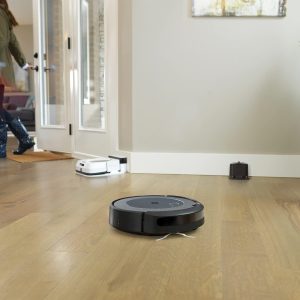
Are they compatible with a self-emptying base?
Only the Roomba i1 and Roomba i3 can be purchased in the i1+ or i3+ version, which means they come equipped with a self-emptying station. The price increases, but in both cases they have the same base, which increases the emptying autonomy to approximately 60 days. On the other hand, the Roomba 692 cannot be purchased with any self-emptying base.
The power is multiplied
We admit that power information is one of iRobot’s weaknesses from our point of view. Being one of the brands with the highest power, it does not give the information transparently. Instead of talking about Pascals, he simply compares the power of his robots with the “standard” power of the 600 series.
In fact, we only know about the Roomba 692 that it has a standard power, which is multiplied by 10 in the i-series Roomba. Once we have tested them, we confirmed that they are one of the most powerful robots on the market, but we do not have objective data to compare them with other competing robots.
Battery: duration and recharge
Battery life is another of the most important elements for many users. In this sense, the Roomba 692 can work for around 10 minutes longer than the Roomba i1 and i3, with an autonomy of about 85-90 minutes compared to 75 minutes. However, the Roomba 692 does not have a recharge and resume function, while the Roomba i1 and i3 do.
That is, these two robots can go to the charging base when the battery runs out and resume cleaning, something that the Roomba 692 cannot do. As for charging time, there are not many differences between the three models, and it ranges between 95 and 110 minutes, approximately.
Navigation, from random to ordered
The movement system of a robot vacuum cleaner is what determines the intelligence and autonomy it has when it comes to recognizing space and moving around the house. The Roomba 692 has reactive technology, and only uses very basic sensors with which it moves randomly. In fact, it can’t create any maps, much less offer intelligent room management.
On the other hand, the Roomba i1 and Roomba i3 go one step further and achieve orderly, but not intelligent, navigation. That is, a gyroscopic sensor is added to the RCON sensors, and this allows them to navigate moving in more orderly lines. In this way, navigation is more effective, to the extent that it guarantees that it covers more space than with random navigation. In this case, robots do create maps, but they are not interactive. Thus, you can see the map in real time, to check where the robot goes, but you cannot send it to a specific room or select the cleaning order.
On the other hand, the three robots incorporate the DirtDetect sensor, with which they can recognize if there are higher concentrations of dirt.
Brushes: change in material
If we look at the brushes, it is interesting to note that all Roomba robot vacuum cleaners have a double central brush, and this is one of the qualities that differentiates them from other brands and makes their effectiveness greater. However, the Roomba 692 has two brushes made of different materials, one made of rubber and the other made of bristles. On the other hand, the Roomba i1 and i3 have a double rubber brush, which works better at sucking up pet hair than the bristle brush. As for the side brush, all three robots have one.
Braava Compatibility
None of Roomba’s three basic robot vacuum cleaners can mop and vacuum at the same time, but those in the i series can be synchronized with the Braava floor mopping robot, also from iRobot. On the other hand, the Roomba 692 is not compatible with the Braava, so under no circumstances will you be able to mop and vacuum.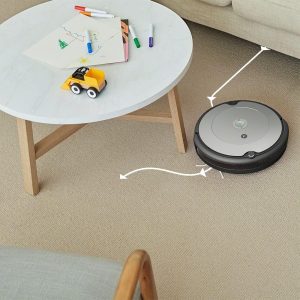
App and voice control
Another aspect where there are no differences between the three Roombas is the synchronization with the mobile app. All three can connect with the iRobot app, as well as with virtual assistants. That is, you can control the robots both from your smartphone and with your own voice. Additionally, through the app you can see personalized cleaning suggestions on all models.
Which basic Roomba robot do we choose?
You’ve already seen the most important differences and similarities of the three Roombas, and now it’s time to choose which one we would choose. In reality, although they are the cheapest robots in the range, none of them have a price that we can consider economical. If we compare them with other robots with similar features, the difference is abysmal. Of course, the reputation that Roomba has as a brand is not shared by others, and, despite being simpler, they always guarantee good results.
The question is deciding if you want a super basic model or a simple one but with a higher level of effectiveness. If you prefer to go for the cheaper model, the Roomba 692 is your option, but don’t expect even tidy navigation. It may be an option that fits better in very small houses, where, although it navigates randomly, it covers the entire space.
But, if you prefer to choose a robot vacuum cleaner that moves in an orderly manner, even if it is not intelligent, we recommend opting for the Roomba i3. The differences with the Roomba i1 are few, and the i3 has a slightly more updated version of the app. Although, as we have said, they are two practically identical robot vacuum cleaners.

